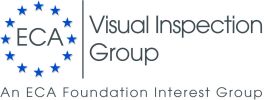Click here to keep updated on the latest news regarding Visual Inspection.
Welcome to the ECA Visual Inspection Group
Injectable medicinal products have to be visually inspected 100%, meaning each container of a batch has to be checked. Containers with defects like particles, under- or overfilling, or vials with missing stoppers have to be rejected. The visual inspection can be carried out manually or by means of an automated system. The problem: in both cases, the inspection is probabilistic. This means that not every defect can be found with 100% certainty. However, on the other hand, the requirement from the Pharmacopoeias is “essentially free of particles”. This requirement still causes discomfiture in the pharmaceutical industry and has led to the formation of the ECA Group for Visual Inspection in December 2013.
The ECA Visual Inspection Group was founded by representatives of the pharmaceutical industry and GMP authorities. Mission of the group is to assemble knowledge on visual inspection of parenterals, for example by continuously developing the Best Practice Guidance on visual inspection. This guidance paper is available for all members of the group. It contains practical solutions on how to organise and carry out the visual inspection of parenterals.
Moreover, the group started working on the topic of Container-/Closure-Integrity testing (CCIT). Here, a 100% testing for “tightness” is only required for containers closed by fusion (e.g. ampoules). Now, the question is how to handle other types of containers with sterile medicinal products? An intact container closure system, which is the sum of packaging components that protect the dosage form, is the pre-requisite for a safe and sterile drug product. Please learn more about us here.
On this page, you will find interesting information about Visual Inspections, e.g.:

